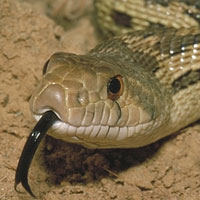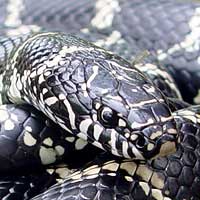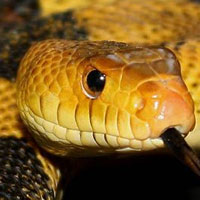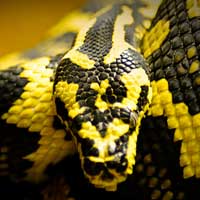The Amelanistic Corn Snake: A Vibrant and Popular Pet
The Amelanistic Corn Snake is a color morph of the Corn Snake, which is scientifically named Pantherophis guttatus. It belongs to the Colubridae family, which includes a wide variety of non-venomous snakes.
Scientific Name: Pantherophis guttatus
Snake Family: Colubridae

Amelanistic Corn Snake: An Overview
The Amelanistic Corn Snake (Pantherophis guttatus) is a striking color morph of the common corn snake, characterized by its bright orange, red, and white scales. This non-venomous snake is native to North America and has become a popular pet due to its manageable size and docile temperament. Amelanistic Corn Snakes lack melanin, which gives them their unique coloration and makes them stand out in any reptile collection.
Where Do Amelanistic Corn Snakes Live?
In the wild, corn snakes are highly adaptable and can be found in various environments across the southeastern United States. Understanding their natural habitat helps create the perfect captive environment.
| Habitat Feature | Description |
|---|---|
| Geographic Range | Southeastern United States |
| Preferred Environment | Woodlands, grasslands, and agricultural fields |
| Climate | Temperate, with moderate humidity |
What Does an Amelanistic Corn Snake Eat?
The Amelanistic Corn Snake is a carnivore that thrives on a diet of small mammals and birds in the wild. Providing the correct diet in captivity is essential for their health.
- Juveniles: Feed on pinky mice every 5-7 days.
- Adults: Feed on adult mice or small rats every 7-10 days.
- Prey Size: Ensure prey is no wider than 1.5 times the snake’s girth.
- Hydration: Provide fresh water in a shallow dish for drinking and soaking.
Behavior and Temperament of the Amelanistic Corn Snake
Amelanistic Corn Snakes are known for their calm and inquisitive nature, making them a favorite among snake enthusiasts and beginners alike.
- Docile Personality: Rarely defensive and highly tolerant of handling.
- Activity Level: Primarily nocturnal but may be active during the day in captivity.
- Climbing Behavior: Enjoys exploring branches and climbing surfaces in its enclosure.
How to Ensure a Long and Healthy Life for Your Amelanistic Corn Snake
With proper care, Amelanistic Corn Snakes can live up to 15-20 years in captivity. Regular health checks and a clean environment are key to their well-being.
| Health Issue | Symptoms | Prevention |
|---|---|---|
| Respiratory Infections | Wheezing, open-mouth breathing | Maintain proper humidity and temperature |
| Skin Shedding Issues | Incomplete or stuck sheds | Ensure proper humidity levels |
| Parasites | Visible mites, itching | Regularly clean and disinfect the enclosure |
Reproductive Behavior of the Amelanistic Corn Snake
The Amelanistic Corn Snake is an oviparous species, meaning it lays eggs. Breeding them in captivity is achievable with the right conditions.
- Mating Season: Late winter to early spring.
- Incubation Period: Approximately 55-60 days.
- Clutch Size: Typically 10-30 eggs.
- Maintain an incubation temperature of 80-85°F for optimal egg development.
Handling and Caring for the Amelanistic Corn Snake
Caring for an Amelanistic Corn Snake is straightforward, making it an ideal pet for beginners. Regular handling and proper enclosure maintenance ensure a happy and healthy snake.
- Maintain a temperature gradient of 75-85°F in the enclosure.
- Provide a substrate such as aspen shavings or coconut fiber for burrowing.
- Include hiding spots and climbing branches for enrichment.
- Handle gently and regularly to build trust and reduce stress.
- Clean the enclosure and replace water frequently to maintain hygiene.














